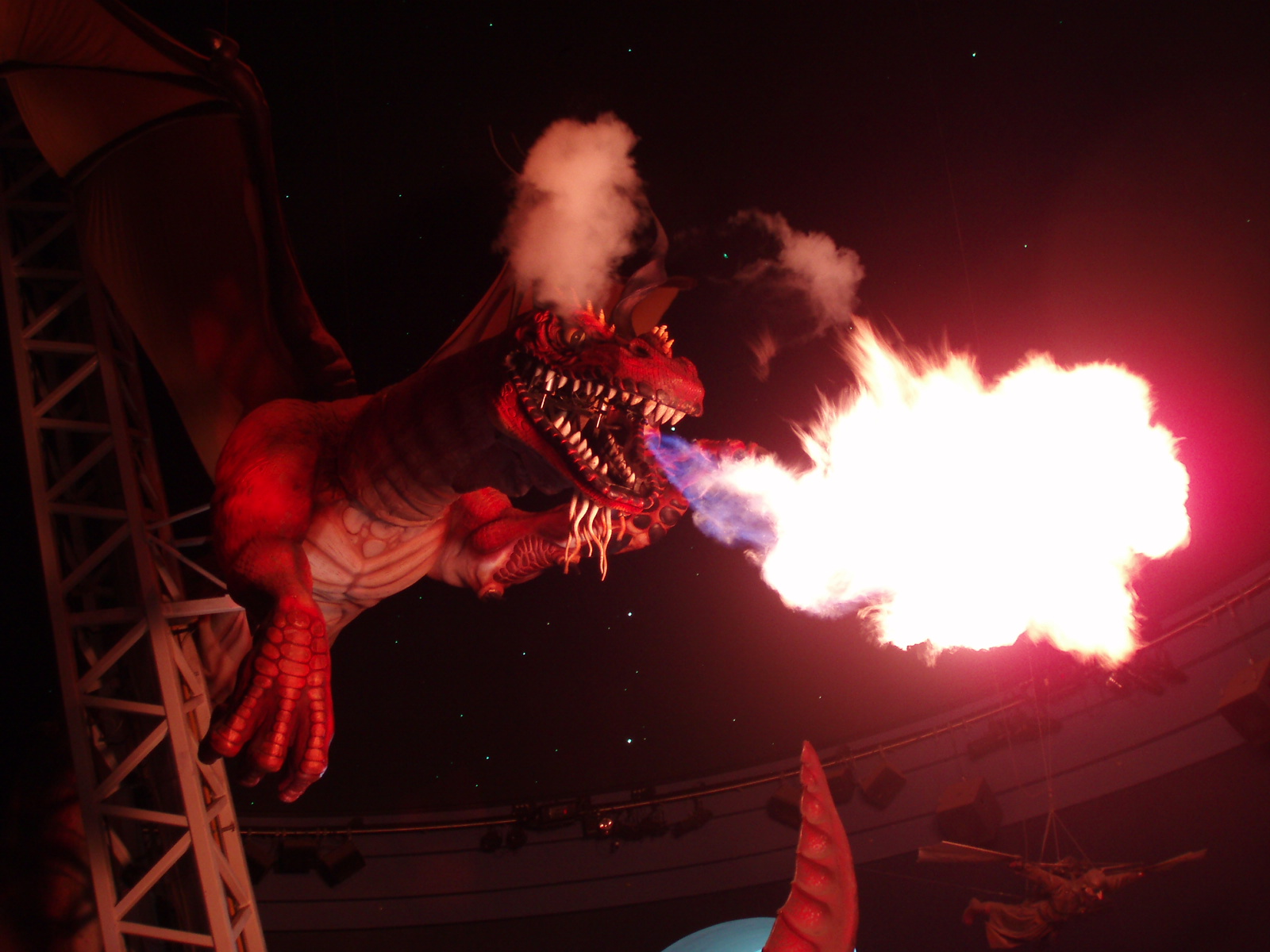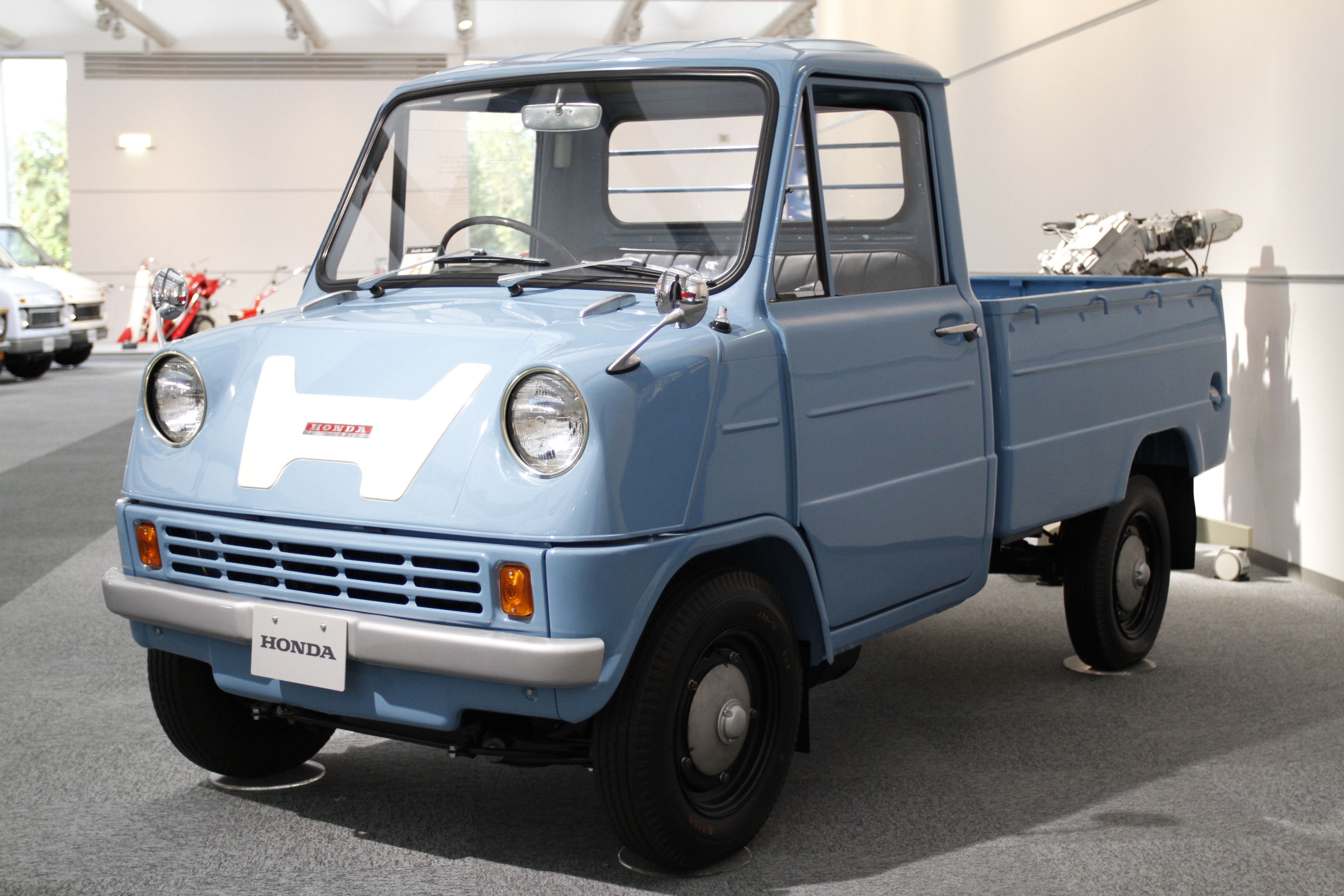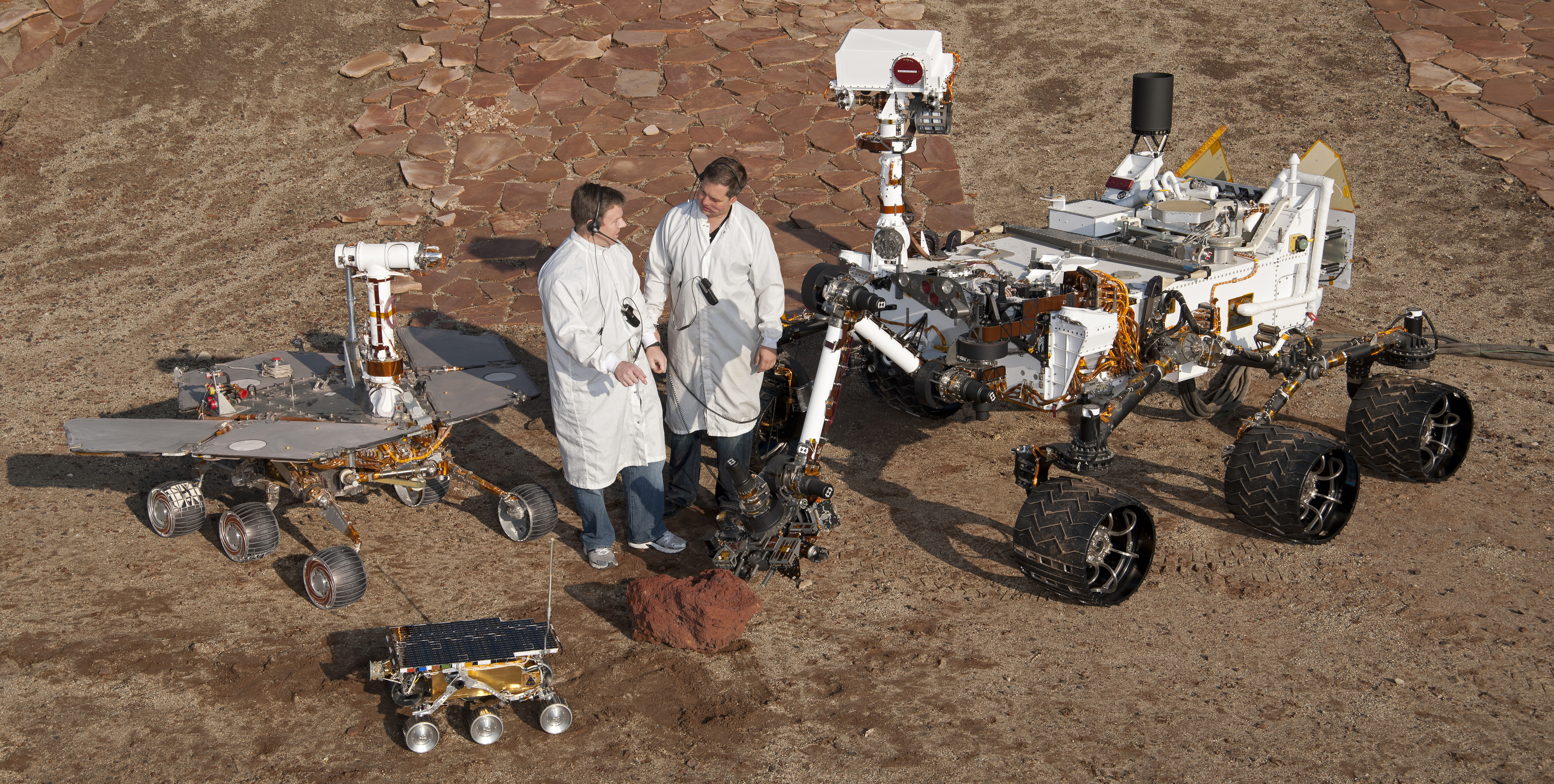|
Walking Vehicle
A walking vehicle is a vehicle that moves on legs rather than wheels or tracks. Walking vehicles have been constructed with anywhere from one to more than eight legs. There are many designs for the leg mechanisms of walking machines that provide foot trajectories with different properties. Walking vehicles are classified according to the number of legs. Common configurations are one leg (pogo stick, monopod, unipod, or "hopper"), two legs (biped or bipod), four legs (quadruped), and six legs ( hexapod). There are a few prototypes of walking vehicles. Currently almost all of these are experimental or proof of concept. Mobility Walking vehicles can provide greater ground clearance than wheeled or tracked vehicles, but the complexity of their leg mechanisms has limited their use. Examples of manned walking vehicles include General Electric's Walking truck, the University of Duisburg-Essen's ALDURO. Timberjack, a subsidiary of John Deere, built a practical hexapod Walking Fore ... [...More Info...] [...Related Items...] OR: [Wikipedia] [Google] [Baidu] |
Honda ASIMO (ver
ASIMO (Advanced Step in Innovative Mobility) is a humanoid robot created by Honda in 2000. In 2002, there were 20 units of the first ASIMO model produced; three different ASIMO models subsequently followed. As of February 2009, there were over 100 ASIMO units in existence. In July of 2018, Honda stated that it would be ceasing all development and production of ASIMO robots in order to focus on more practical applications using the technology developed through ASIMO's lifespan. It made its last active appearance in March 2022, as Honda announced the retirement of ASIMO to concentrate on remote-controlled, avatar-style robotic technology. Development Honda began developing humanoid robots in the 1980s with the goal of making a walking robot, including several prototypes that preceded ASIMO. E0 was the first bipedal model produced as part of the Honda E series, which was an early experimental line of self-regulating walking robots with wireless movements created between 1986 a ... [...More Info...] [...Related Items...] OR: [Wikipedia] [Google] [Baidu] |
Animatronic
An animatronic is a puppet controlled electronically to move in a fluent way. Animatronics are the modern adaptation of the automaton and are often used for the portrayal of characters in films, video games and in theme park attractions. Animatronics are a multidisciplinary field integrating puppetry, anatomy and mechatronics. Animatronic figures can be implemented with both computer and human control, including teleoperation. Motion actuators are often used to imitate muscle movements and create realistic motions. Figures are usually encased in body shells and flexible skins made of hard or soft plastic materials and finished with colors, hair, feathers and other components to make them more lifelike. Animatronics stem from a long tradition of mechanical automata powered by hydraulics, pneumatics and clockwork. Before the term "animatronics" became common, they were usually referred to as "robots". Since then, robots have become known as more practical programmable machines t ... [...More Info...] [...Related Items...] OR: [Wikipedia] [Google] [Baidu] |
Tradinno
Tradinno is a giant, animatronic, fire-breathing dragon, featured in the 2014 Guinness Book of World Records as the world largest walking robot. It plays the Dragon in the play ''Drachenstich'' in the German town of Furth im Wald. The name Tradinno is a mix of Tradition and innovation. History In 2001, it was decided that the old dragon prop in the play'' Drachenstich'' would be replaced with a new dragon. In 2002, Zollner Elektronik AG built a 1:4 scale concept design. The model was then showcased in a number of events. In February 2007, Zollner officially took up the project, and delivered the dragon on 2 July 2010. It has been used in the theater since 31 July 2010. Description The dragon weighs 11 tons, and is remote-operated. It is powered by a 2.0-liter turbo-diesel engine with 140 horsepower. It has a 12-meter wingspan The wingspan (or just span) of a bird or an airplane is the distance from one wingtip to the opposite wingtip. For example, the Boeing 777–200 ha ... [...More Info...] [...Related Items...] OR: [Wikipedia] [Google] [Baidu] |
BigDog
BigDog is a dynamically stable quadruped military robot platform that was created in 2005 by Boston Dynamics with the Harvard University Concord Field Station. It was funded by the U.S. Defense Advanced Research Projects Agency (DARPA), but the project was shelved after the BigDog's gas engine was deemed too loud for combat. History BigDog was funded by the Defense Advanced Research Projects Agency (DARPA) in the hopes that it would be able to serve as a mechanic mule, pack mule to accompany soldiers in terrain too rough for conventional vehicles. Instead of wheels or treads, BigDog uses four legs for movement, allowing it to move across surfaces that would be difficult for wheels. The legs contain a variety of sensors, including joint position and ground contact. BigDog also features a Fibre-optic gyroscope, laser gyroscope and a stereo vision system. BigDog is long, stands tall, and weighs , making it about the size of a small mule. It is capable of traversing difficult ... [...More Info...] [...Related Items...] OR: [Wikipedia] [Google] [Baidu] |
Boston Dynamics
Boston Dynamics, Inc., is an American engineering and robotics design company founded in 1992 as a Research spin-off, spin-off from the Massachusetts Institute of Technology. Headquartered in Waltham, Massachusetts, Boston Dynamics has been owned by the Hyundai Motor Group since December 2020, but it only completed the acquisition in June 2021. Boston Dynamics develops a series of dynamic highly mobile robots, including BigDog, Boston Dynamics#Spot, Spot, Atlas (robot), Atlas, and Handle. In 2019, Spot became its first commercially available robot. The company has stated its intent to commercialize its other robots, including Handle. History The company was founded by Marc Raibert, who spun the company off from the Massachusetts Institute of Technology in 1992. The company was an outgrowth of the Leg Laboratory, Raibert's research lab at MIT and Carnegie Mellon University. The Leg Laboratory helped establish the scientific basis for highly dynamic robots. These robots were ins ... [...More Info...] [...Related Items...] OR: [Wikipedia] [Google] [Baidu] |
ASIMO
ASIMO (Advanced Step in Innovative Mobility) is a humanoid robot created by Honda in 2000. In 2002, there were 20 units of the first ASIMO model produced; three different ASIMO models subsequently followed. As of February 2009, there were over 100 ASIMO units in existence. In July of 2018, Honda stated that it would be ceasing all development and production of ASIMO robots in order to focus on more practical applications using the technology developed through ASIMO's lifespan. It made its last active appearance in March 2022, as Honda announced the retirement of ASIMO to concentrate on Remote control, remote-controlled, Avatar (computing), avatar-style robotic technology. Development Honda began developing humanoid robots in the 1980s with the goal of making a walking robot, including several prototypes that preceded ASIMO. E0 was the first Bipedalism, bipedal model produced as part of the Honda E series, which was an early experimental line of self-regulating walking robots ... [...More Info...] [...Related Items...] OR: [Wikipedia] [Google] [Baidu] |
Honda E Series
The E series was a collection of successive humanoid robots created by the Honda Motor Company between the years of 1986 and 1993. These robots were only experimental, but later evolved into the Honda P series, with Honda eventually amassing the knowledge and experience necessary to create Honda's advanced humanoid robot: ASIMO. The fact that Honda had been developing the robots was kept secret from the public until the announcement of the Honda P2 in 1996. E0, developed in 1986, was the first robot. It walked in a straight line on two feet, in a manner resembling human locomotion, taking around 5 seconds to complete a single step. Quickly engineers realised that in order to walk up slopes, the robot would need to travel faster. The model has 6 degrees of freedom: one in each groin, one in each knee and one in each ankle. Models *E0, developed in 1986. *E1, developed in 1987, was larger than the first and walked at 0.25 km/h. This model and subsequent E-series robots have 12 de ... [...More Info...] [...Related Items...] OR: [Wikipedia] [Google] [Baidu] |
Humanoid Robot
A humanoid robot is a robot resembling the human body in shape. The design may be for functional purposes, such as interacting with human tools and environments and working alongside humans, for experimental purposes, such as the study of bipedal locomotion, or for other purposes. In general, humanoid robots have a torso, a head, two arms, and two legs, though some humanoid robots may replicate only part of the body. Androids are humanoid robots built to aesthetically resemble humans. History The concept of a humanoid robot originated in many different cultures around the world. Some of the earliest accounts of the idea of humanoid automata date to the 4th century BCE in Greek mythologies and various religious and philosophical texts from China. Physical prototypes of humanoid automata were later created in the Middle East, Italy, Japan, France and South Korea. Greece The Greek god of blacksmiths, Hephaestus, created several different humanoid automata in various myths. In ... [...More Info...] [...Related Items...] OR: [Wikipedia] [Google] [Baidu] |
Honda
commonly known as just Honda, is a Japanese multinational corporation, multinational Conglomerate (company), conglomerate automotive manufacturer headquartered in Minato, Tokyo, Japan. Founded in October 1946 by Soichiro Honda, Honda has been the world's largest motorcycle manufacturer since 1959, reaching a production of 500 million . It is also the world's largest manufacturer of internal combustion engines measured by number of units, producing more than 14 million internal combustion engines each year. Honda became the second-largest Japanese automobile manufacturer in 2001. In 2015, Honda was the eighth largest automobile manufacturer in the world. The company has also built and sold the most produced motor vehicle in history, the Honda Super Cub. Honda was the first Japanese automobile manufacturer to release a dedicated luxury brand, Acura, on 27 March 1986. Aside from their core automobile and motorcycle businesses, Honda also manufactures garden equipment, marine eng ... [...More Info...] [...Related Items...] OR: [Wikipedia] [Google] [Baidu] |
Mars
Mars is the fourth planet from the Sun. It is also known as the "Red Planet", because of its orange-red appearance. Mars is a desert-like rocky planet with a tenuous carbon dioxide () atmosphere. At the average surface level the atmospheric pressure is a few thousandths of Earth's, atmospheric temperature ranges from and cosmic radiation is high. Mars retains some water, in the ground as well as thinly in the atmosphere, forming cirrus clouds, frost, larger polar regions of permafrost and ice caps (with seasonal snow), but no liquid surface water. Its surface gravity is roughly a third of Earth's or double that of the Moon. It is half as wide as Earth or twice the Moon, with a diameter of , and has a surface area the size of all the dry land of Earth. Fine dust is prevalent across the surface and the atmosphere, being picked up and spread at the low Martian gravity even by the weak wind of the tenuous atmosphere. The terrain of Mars roughly follows a north-south ... [...More Info...] [...Related Items...] OR: [Wikipedia] [Google] [Baidu] |
Rover (space Exploration)
A rover (or sometimes planetary rover) is a planetary surface exploration device designed to move over the rough surface of a planet or other planetary mass celestial bodies. Some rovers have been designed as land vehicles to transport members of a human spaceflight crew; others have been partially or fully autonomous robots. Rovers are typically created to land on another planet (other than Earth) via a lander-style spacecraft,tasked to collect information about the terrain, and to take crust samples such as dust, soil, rocks, and even liquids. They are essential tools in space exploration. Features Rovers arrive on spacecraft and are used in conditions very distinct from those on the Earth, which makes some demands on their design. Reliability Rovers have to withstand high levels of acceleration, high and low temperatures, pressure, dust, corrosion, cosmic rays, remaining functional without repair for a needed period of time. Autonomy Rovers which land on celesti ... [...More Info...] [...Related Items...] OR: [Wikipedia] [Google] [Baidu] |





